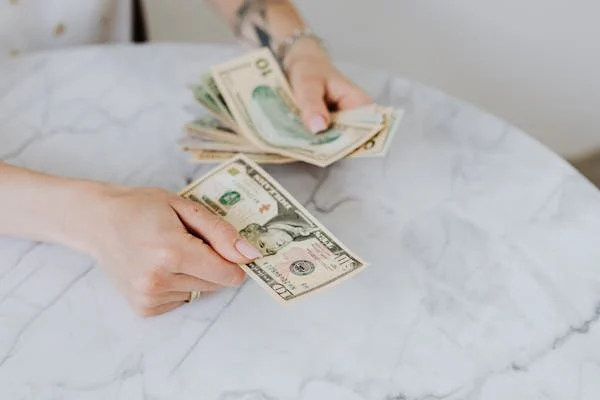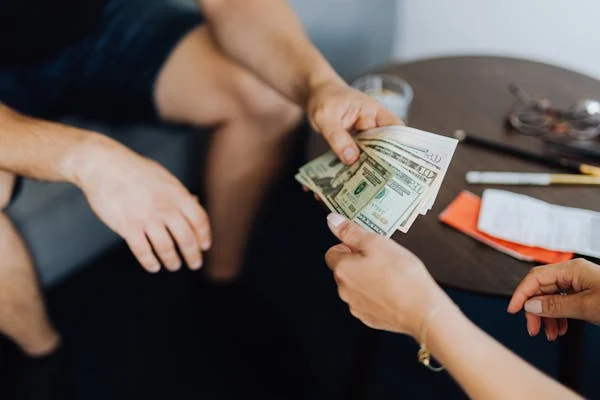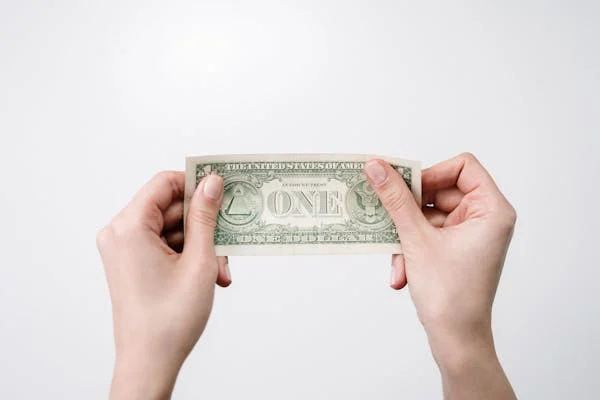Raising money for a startup can be tricky. Founders need to move fast, investors want to feel safe, and no one wants to spend too much on legal paperwork. That’s where convertible notes and SAFE notes come in. Both are tools that help startups raise money without needing to set a firm valuation upfront. But how do these two compare? Which one do investors really prefer? And when should founders use one over the other?
1. 65% of pre-seed funding rounds use SAFE notes over convertible notes
Why SAFEs Dominate Pre-Seed
At the pre-seed stage, most startups are still figuring things out. Revenue is either minimal or non-existent, and there’s a lot of uncertainty around how to value the company. That’s where SAFEs—Simple Agreements for Future Equity—shine.
SAFEs offer a simple and founder-friendly way to bring in money without having to assign a formal valuation. There’s no interest rate, no maturity date, and fewer negotiations. It’s plug-and-play, which is why nearly two-thirds of pre-seed rounds lean toward SAFEs.
What This Means for You
If you’re raising a pre-seed round, chances are high you’ll use a SAFE. Investors expect it, and you’ll save legal costs. But keep in mind: SAFEs are not free passes. They will convert into equity and dilute you—often without the investor needing to lift a finger.
If you’re in a market where investors are still warming up to SAFEs, have an educational pitch ready. Explain how post-money SAFEs work and how they’re structured to be fair.
Also, consider whether your round size and target investors make SAFEs the best option. SAFEs are ideal for smaller rounds and less formal fundraising—think angel investors and accelerators.
2. 80% of Y Combinator startups opt for SAFEs in their first round
Why Y Combinator Loves SAFEs
Y Combinator invented the SAFE, so it’s no surprise that their portfolio companies overwhelmingly use it. But there’s more to it. SAFEs fit the Y Combinator model: move fast, validate quickly, and don’t waste time negotiating terms.
The statistic speaks for itself—80% of YC companies stick to SAFEs in the beginning. It’s not just convenience. It’s also about signaling. When a YC startup uses a SAFE, it shows they’re aligned with a certain startup culture—fast-moving, tech-focused, and scalable.
How You Can Apply This Insight
If you’re following a similar startup trajectory or even applying to YC or other top accelerators, adopting a SAFE can position you as “in the know.” It makes you easier to fund, and it aligns you with investor expectations.
Still, you’ll want to use a post-money SAFE rather than the older pre-money version. Why? Post-money SAFEs give both founders and investors clarity on how much ownership is being given away.
Take a few hours to understand the Y Combinator SAFE templates. Customize them if needed, but don’t overthink it. Using what’s already trusted and tested can fast-track your funding.
3. Convertible notes are used in 45% of early-stage convertible financing deals
The Enduring Appeal of Convertible Notes
Despite the rise of SAFEs, convertible notes aren’t going anywhere. Almost half of early-stage convertible financings still use them. They appeal to more traditional investors who want protections—like interest rates and maturity dates—that SAFEs lack.
Convertible notes are essentially loans that convert to equity. They give investors more comfort, especially when there’s more at stake financially or timewise.
Should You Use Convertible Notes?
Ask yourself a few questions:
- Are your investors expecting interest?
- Are they asking for a maturity date?
- Do they want legal protection if your startup fails?
If the answer is yes, convertible notes may be the better option.
Also, convertible notes can offer more leverage in negotiations. If your startup has early traction but not enough for a priced round, a convertible note can give investors more structure, and in return, you can ask for more money or better terms.
4. Only 20% of SAFE note users include valuation caps without discounts
Unpacking SAFE Terms
Here’s a crucial detail many founders overlook: only 1 in 5 SAFEs include a valuation cap without a discount. That means most SAFEs either include both, or only a discount.
A valuation cap puts a ceiling on the price at which the SAFE converts into equity. A discount allows conversion at a reduced price compared to the next funding round. Without either, the SAFE simply converts at the next round’s price—giving the investor no upside for taking early risk.
What You Should Do
If you’re raising money with a SAFE, include at least a valuation cap. It tells investors you recognize their early commitment and are giving them a better deal than latecomers.
Avoid offering both a cap and a discount unless you’re in a buyer’s market or your startup has high risk. If you have traction or investor demand, just a cap is often enough.
Explain these terms clearly in your pitch. Many investors will push for both simply because they can. But you don’t have to say yes—structure it based on your leverage.
5. 70% of SAFEs have valuation caps, compared to 85% of convertible notes
Why Valuation Caps Matter
Valuation caps are the most common term in both SAFEs and convertible notes—but they’re even more dominant in convertible notes. Why? Because caps give investors a clearer sense of what they’re buying into.
When investors put money in early, they’re betting your startup will be worth more later. A cap locks in a “max” price per share for them, which can translate to a big win when you raise a priced round.
Actionable Advice for Founders
Don’t issue SAFEs or notes without a cap unless you’re really oversubscribed. Investors want to know they’ll be rewarded for taking early risk.
Use the cap to your advantage in negotiations. If you need to push back on a discount or other term, offer a slightly more favorable cap instead. It gives investors upside without complicating your cap table.
Lastly, always cap SAFEs on a post-money basis. It’s cleaner, more transparent, and aligns with what top-tier investors expect today.
6. 30% of convertible notes include a maturity date under 18 months
The Clock Is Ticking
A maturity date is the deadline by which a convertible note must either convert into equity or be repaid. Nearly a third of convertible notes set this timeline at under 18 months, signaling urgency and shorter fundraising horizons.
This can create pressure for founders to either raise a priced round quickly or repay the debt—often an impossible task for a young startup.
How to Handle Maturity Dates
If you’re using convertible notes, don’t agree to a maturity date lightly. Less than 18 months might sound reasonable at first, but time flies in startup life. Always push for a longer window—ideally 24 months—to give yourself breathing room.
You’ll also want to understand the consequences if you don’t raise another round by the maturity date. Will the note convert automatically? Will investors demand repayment? Always spell this out.
Try to include automatic conversion at maturity into equity at a fair valuation. This way, you’re not on the hook for cash, and investors still get equity.
7. 90% of SAFEs do not include interest rates
No Interest, No Problem
Unlike convertible notes, SAFEs are not debt. That’s why 90% of them come without interest rates. This is a huge plus for founders—you’re not watching your liabilities grow as you build.
It also keeps your cap table cleaner. Interest on a note compounds over time, which means more equity for investors later. With SAFEs, you avoid that creep entirely.
What Founders Need to Know
If an investor asks for interest on a SAFE, it’s a red flag. Politely explain that interest applies to debt instruments, not equity agreements like SAFEs. You’re not borrowing money—you’re selling future ownership.
Use this stat to strengthen your argument. 90% of SAFEs don’t include interest, and for good reason.
And here’s a tip: Keep your SAFE simple. The moment you start adding interest, triggers, and complex terms, you might as well use a convertible note instead.
8. 75% of convertible notes include interest rates between 4%–8%
Why Convertible Notes Act Like Loans
Convertible notes are debt until they convert, which is why most carry interest—typically in the 4% to 8% range. This interest is usually paid in equity at conversion, but it still increases the investor’s stake.
For founders, that means more dilution.
What You Should Do
Don’t overlook this small number. A 6% interest rate may seem harmless, but over two years, it can significantly increase how much equity you give away—especially when combined with discounts and caps.
If you must agree to interest, try to negotiate it down. Aim for the lower end of the range, like 4% or 5%. Better yet, tie it to your company’s traction or fundraising timeline. For example, a lower interest if you raise within 12 months.
Make sure the interest compounds annually, not monthly. The latter will eat into your cap table faster than you think.
9. 55% of convertible notes convert at a discount rate of 20%
A Common Conversion Mechanism
Discounts are one of the most common features of convertible notes. They reward early investors by giving them a better price when the company raises a priced round. And 20% is the sweet spot—used in over half of convertible note deals.
This means that if your next round values the company at $10 million, note holders convert as if the company were worth $8 million.
How to Negotiate This Term
If you’re raising with convertible notes, you’ll almost always be asked to include a discount. But don’t automatically agree to 20%.
If your startup is gaining traction or investor demand is high, you can push for 10% or 15%. On the flip side, if you’re having trouble raising, the discount is often the easiest thing to negotiate upward.

Don’t combine a high discount with a low valuation cap unless you’re desperate. These terms stack and can result in major dilution. Balance one or the other.
10. 65% of SAFEs convert without discounts if there’s a cap
Investors Choose the Cap
With SAFEs, the discount and the valuation cap often act as two separate levers. Interestingly, in 65% of cases where there’s a cap, there’s no discount at all. Investors typically choose one benefit—most prefer the cap.
Why? A cap provides more potential upside. It also adds certainty.
What You Should Know
Don’t feel pressured to include both a cap and a discount unless you absolutely need to. One should be enough—especially for a SAFE.
Use this stat to push back when investors demand both. Show them how most other founders structure SAFEs. If you’re giving them a favorable cap, remind them it reflects the risk they’re taking.
Also, communicate clearly how the cap will work in a future round. That will help avoid confusion and keep your investor relationships strong.
11. Post-money SAFEs became standard in 95% of YC deals after 2018
A Shift in the Market
In 2018, Y Combinator made a major change—they switched from pre-money to post-money SAFEs. Since then, nearly all their deals follow this standard.
Post-money SAFEs make ownership math clearer. They tell you exactly how much of your company you’re giving away before your next round. That’s a huge advantage for founders who want to manage dilution.
Use This to Your Advantage
If you’re raising with SAFEs, always use the post-money version. It’s more transparent, which builds trust with investors. It also helps you plan future rounds without surprises.
Download Y Combinator’s template. Customize it with your lawyer, but don’t reinvent the wheel. And make sure to understand how the SAFE stacks in your cap table.
You can even mention this stat when pitching: “We’re using the same SAFE structure that 95% of YC startups use. It’s clean, standard, and transparent.”
That gives investors confidence that you’ve done your homework.
12. 40% of Series Seed rounds involved SAFEs in the pre-seed phase
The SAFE-to-Seed Pipeline
Almost half of companies that raise a Series Seed round started out with SAFEs. That shows how widespread and accepted they are—not just for tiny angel checks but for companies that go on to raise millions.
This also means that SAFEs are no longer just experimental tools. They’re part of the mainstream startup funding playbook.
Your Takeaway
If you’re aiming for a Seed round in the next 12 to 24 months, a SAFE might be your ideal starting point. It gets you to market faster and keeps your cap table clean until it’s time to raise a priced round.
But don’t forget: those SAFEs will convert. Track how much you’ve raised, who owns what, and what your fully diluted cap table will look like. Many founders are surprised by how much equity they’ve given away without realizing it.
13. 50% of convertible notes convert automatically at the next equity round
Automatic Conversion Is the Norm
Convertible notes can convert in a few different ways—automatically at a priced round, manually at investor discretion, or at maturity. Half of all notes are set to convert automatically when you raise your next equity round.
That gives investors peace of mind. They don’t want to chase you for signatures or wait around for another maturity date.
Plan Around This Feature
If your note includes automatic conversion, make sure you understand when and how it triggers. Is it based on a minimum raise? A new lead investor? Certain terms?
Spell this out in the agreement. You want to avoid surprises—like notes converting unexpectedly during a bridge round or smaller SAFE round.
Automatic conversion also means you need to keep your legal documents clean and your cap table updated. A sloppy process can spook new investors or slow down your round.
14. 85% of investors prefer convertible notes in bridge financing rounds
Bridge Rounds Bring Convertible Notes Back
Bridge financing is that in-between moment. You’ve raised a round, burned through some runway, and need more funds before your next big raise. In these situations, 85% of investors lean toward convertible notes over SAFEs.
Why? Because bridge rounds involve risk. Investors want protection. They want interest. They want maturity dates. Convertible notes offer all of that—unlike SAFEs, which are more flexible but less secure.
What You Should Do in a Bridge Scenario
If you’re planning a bridge round, assume you’ll need to use a convertible note. Don’t waste time pitching SAFEs unless you’re dealing with very friendly investors or angels.
Start by offering terms that show you understand the higher risk for investors. Include a fair interest rate, usually around 6%, and a valuation cap that gives them an upside in the next round. You can also consider a short maturity—12 to 18 months—to make the deal more appealing.
Above all, be transparent. Investors know bridge rounds are often lifelines. Make your case with confidence and show that you have a solid plan to reach your next milestone.
15. 60% of SAFEs are used by founders without legal representation
SAFEs Are Seen as “DIY-Friendly”
One reason SAFEs have exploded in popularity is because they seem easy. Templates are available online. No debt terms to negotiate. And for 60% of founders, that means they go ahead without hiring a lawyer.
While it can save money upfront, going solo also introduces risk. You might misunderstand the terms, over-dilute yourself, or forget key details like conversion triggers.
The Smarter Approach
Yes, SAFEs are simple. But simple doesn’t mean risk-free. Even if you’re bootstrapping, always run your SAFE by someone who understands startup law—whether it’s a lawyer, an advisor, or even a senior founder.
If you’re raising multiple SAFEs, you’ll also want to make sure the terms across all instruments are aligned. Mismatched caps, discounts, or MFN clauses can turn your cap table into a mess.

Consider hiring a lawyer for a flat-rate SAFE review, or using a vetted legal service that works with startups. The small investment can save you a major headache when it’s time to raise your Seed or Series A.
16. 35% of SAFEs are signed without a valuation cap (most in boom markets)
When Investors Bet on Future Growth
During bull markets or investor frenzies, founders often have the upper hand. That’s when we see something interesting—about 35% of SAFEs get signed with no valuation cap.
This essentially gives investors no pricing advantage at conversion. They’re betting you’ll grow fast and raise again soon, and they just want to be on the ride.
Should You Try It?
If you have lots of interest and strong traction, it’s worth considering. But understand the implications. SAFEs without caps convert at whatever valuation your next round dictates—possibly at a much higher share price. That’s great for you, not so great for early investors.
You’ll need to be upfront about this when pitching. Some investors will say no immediately, but others—especially strategic angels or mentors—might be open to it.
If you’re in a crowded vertical or hot space, don’t be afraid to lead with an uncapped SAFE. Just remember: once you take one, others may ask for the same.
17. 92% of pre-seed rounds under $500k involve SAFEs
SAFEs Are King in Micro-Rounds
In small rounds—especially those under $500k—SAFEs dominate. A whopping 92% of these rounds use them. That’s because SAFEs are fast, simple, and require less legal work. And at this size, most investors aren’t worried about complex terms.
They just want in.
What This Means for Founders
If you’re raising a small round to build MVPs, test markets, or hit early traction goals, SAFEs are your go-to. They allow you to focus on building, not legal negotiations.
Still, be strategic. Even small checks can stack up. Use a cap. Keep terms consistent. Track everything with a cap table tool like Carta, Pulley, or even a solid spreadsheet.
Avoid the temptation to customize terms for every investor. That’s how small rounds become big admin burdens later on.
18. 70% of convertible note holders push for pro rata rights
Investors Want to Protect Their Share
Pro rata rights let investors buy more shares in future rounds to maintain their ownership. With convertible notes, 70% of investors push for this clause.
Why? Because early-stage investors know their equity will be diluted as the company grows. Pro rata gives them a seat at the table for future rounds.
Your Move
You’ll almost certainly be asked for pro rata rights when issuing convertible notes. Be ready. But that doesn’t mean you have to say yes to everyone.
Reserve these rights for your most strategic investors—those who will help in future rounds, open doors, or guide you through tough decisions.

When you grant pro rata, clarify whether it’s “broad-based” or just for the next round. Define limits. Don’t give away the farm now and regret it at Series A.
19. 15% of SAFE notes explicitly include MFN (Most Favored Nation) clauses
The Hidden Clause You Shouldn’t Overlook
MFN clauses let investors claim the best terms from any future SAFE you issue. They don’t care what deal they signed—they’ll match the best one you give to someone else.
Only 15% of SAFEs include this clause, but that number is growing, especially among more sophisticated investors.
What You Should Do
First, know whether your SAFE has an MFN clause. If it does, every time you issue a new SAFE, you’ll need to review previous agreements. If the new terms are better, the MFN investor gets them too.
That can cause a ripple effect and complicate your cap table.
If you’re negotiating with a small angel who insists on MFN, ask why. Offer a fair valuation cap instead. If you do agree to MFN, limit it to a time window—say 90 or 180 days.
Track it carefully. A few words in one document can change everything about your round.
20. SAFEs make up 77% of YC-backed startup instruments as of 2024
The Dominance of SAFEs in the Top Accelerator
By 2024, 77% of all instruments used by Y Combinator startups are SAFEs. This isn’t just a trend—it’s the new norm for early-stage fundraising.
YC’s model is fast-paced. Founders move quickly. Investors make decisions fast. SAFEs support that model by being frictionless.
What This Means for You
If you’re following a similar path—tech-driven, fast-scaling, investor-backed—SAFEs are probably the best choice. They save time, reduce costs, and are trusted in the startup world.
But just because they’re easy to use doesn’t mean you should use them carelessly. Know what your terms are. Track your dilution. Plan your next raise with your cap table in mind.
When in doubt, follow the leaders. YC has helped thousands of startups raise. If 77% of them use SAFEs, there’s a good reason.
21. Convertible notes represent 58% of legal disputes in early-stage financings
More Complexity, More Conflict
Convertible notes come with legal weight. They are debt instruments with maturity dates, interest rates, and potential repayment terms. That’s why they account for 58% of early-stage legal disputes, even though they’re not used as often as SAFEs.
The complexity increases the room for error—and tension.
How to Stay Out of Court
First, don’t use convertible notes casually. Only use them if you have legal support or strong investor pressure. If you do use them, define every term clearly:
- What happens at maturity?
- What triggers conversion?
- Can the investor call the note early?
Use this stat to think twice. SAFEs are legally simpler and create fewer misunderstandings. When legal disputes happen, they almost always stem from unclear terms, mismatched expectations, or missing documents.
If you do go with a note, keep everything documented, aligned, and transparent.
22. SAFEs represent 12% of post-conversion cap table confusion claims
SAFEs Aren’t Always Safe
Even though SAFEs are simpler, they’re not foolproof. Around 12% of post-conversion cap table errors or confusion come from misused or misunderstood SAFEs.
The most common issues?
- Forgetting to include SAFEs in pre-round dilution modeling
- Not tracking multiple caps and discounts properly
- Misunderstanding post-money vs pre-money implications
How to Protect Your Cap Table
Don’t treat SAFEs like free money. They convert into equity—often more than you realize. Every time you sign one, update your fully diluted cap table. Track the valuation cap, amount, and conversion formula.
Use tools like Pulley or Carta to help. If you’re still using Excel, double-check everything.

Before your next priced round, do a full SAFE audit. That means reviewing terms, estimating conversion shares, and checking how much of your company you’ve actually sold.
23. 68% of accelerators recommend SAFEs to avoid interest and maturity complications
Accelerators Push for Speed
Most accelerators want you moving fast. They focus on getting your product live, your customers onboarded, and your funding in the bank. That’s why 68% of them recommend SAFEs over convertible notes—they don’t want founders distracted by legal friction.
SAFEs skip the debt structure. No interest, no payback dates, no countdown clock. That makes it easier to focus on what matters.
Take Action
If you’re applying to an accelerator, check their preferred financing model. If they suggest SAFEs, go with that unless there’s a strong reason not to.
You’ll also gain investor trust. They’ve seen hundreds of founders raise money through SAFEs, so they know how to interpret the terms.
And if you’re designing your own SAFE, use the standard templates from Y Combinator or a similar source. Don’t try to get clever. Clean, standard, and consistent always wins in an accelerator environment.
24. 43% of investors find convertible notes more negotiable than SAFEs
Flexibility Can Be a Double-Edged Sword
Not all investors are fans of SAFEs. In fact, 43% say they prefer convertible notes because they offer more room for negotiation.
With notes, investors can ask for interest, set maturity dates, and negotiate repayment triggers. That gives them control—something SAFEs don’t easily allow.
Your Strategy
If you’re dealing with investors who like control—family offices, traditional VCs, or experienced angels—be prepared to use convertible notes.
But that also means knowing what you’re negotiating. Get familiar with how interest works, how maturity timelines affect your raise, and how default triggers can be used.
If an investor pushes back on a SAFE, offer a note with minimal interest and a generous maturity. That can be your middle ground.
Be open to compromise, but don’t give away terms just to close quickly. Remember, you’re setting a precedent for your future rounds.
25. 61% of founders believe SAFEs are faster to close than convertible notes
Speed Wins in Early-Stage
More than half of founders say SAFEs helped them close funding faster. That’s not surprising. With fewer terms to negotiate and templates widely available, SAFEs can turn into signed deals in days—not weeks.
When you’re trying to get money in quickly to hit a key milestone, speed matters.
Here’s How to Use This Insight
If your priority is to raise fast—maybe you need cash for a product launch, or you’re extending runway—go with a SAFE.
Set a firm timeline for closing the round. Share your SAFE upfront. Make it clear there’s a limited window, and you’re moving forward with whoever commits first.
This urgency, combined with the simplicity of SAFEs, can unlock faster commitments and create momentum.
26. Average time to close a SAFE: 2–3 weeks; convertible note: 4–6 weeks
Time Is Money
Closing a SAFE typically takes about half the time of a convertible note. That’s a major advantage in early-stage startup life, where every week matters.
The longer a round stays open, the more energy it drains from you. You’re pitching, emailing, following up, and not building. SAFEs help cut that time in half.

Plan Around This Difference
If you’re fundraising on a tight deadline, build this timeline into your plan. Want to launch in 90 days? Give yourself 2–3 weeks to raise via SAFEs and another month to focus on product.
If your investors insist on a note, make sure you build in time for legal review, term negotiation, and redlining. Those extra weeks may cost you more than just time—they can delay your runway or product milestones.
27. 90% of convertible notes are governed by state law; SAFEs vary widely
Legal Jurisdiction Matters
Most convertible notes are governed by state-specific legal frameworks—especially Delaware or California. This provides some predictability. But SAFEs? They vary more. Some are silent on governing law. Others use investor-specific clauses.
This can create complications during disputes or enforcement.
What Founders Should Do
Always specify the governing law in your SAFE or note. Delaware is usually a safe bet if you’re incorporated there. California is common too, especially for west coast investors.
Avoid leaving this field blank. And if an investor requests a different jurisdiction, make sure your legal team is comfortable working within that framework.
A little legal clarity now can save you from long and expensive battles later.
28. 52% of convertible notes involve institutional angel investors; SAFEs, 35%
Different Tools for Different Investor Types
Convertible notes are more likely to attract institutional angels—those who write bigger checks, expect board updates, and prefer structured deals. SAFEs tend to be used with smaller angels or friends-and-family rounds.
If you’re going after serious investors, understand they may expect a note instead of a SAFE.
Your Fundraising Game Plan
If your round includes a mix of angels, you might need to offer both tools. Or better yet, segment your raise—offer SAFEs to smaller checks early on, then switch to convertible notes for larger investors later.
But don’t mix terms too much. That can lead to cap table confusion. If you must use both, align valuation caps and keep track of every agreement with precision.
And make sure institutional investors are crystal clear on conversion terms, governance, and pro rata rights.
29. 88% of crowdfunding platforms favor SAFEs over convertible notes
Retail Investors Want Simplicity
When you raise through crowdfunding platforms like Republic or SeedInvest, the structure needs to be simple. That’s why 88% of these platforms recommend or require SAFEs.
They’re easier to explain. They require fewer disclosures. And they work better with automated legal systems.
What This Means for Crowdfunders
If you’re raising from the crowd, stick to SAFEs. Use a clean, post-money version. Include a cap that rewards early investors without giving too much away.
And prepare educational content—videos, FAQs, or breakdowns—that explain how the SAFE works. Your investors won’t be pros. But with the right messaging, they’ll feel confident investing anyway.
Keep your deal simple, transparent, and fair.
30. Convertible notes are 3x more likely to be used in follow-on bridge rounds than SAFEs
SAFEs Start the Journey, Notes Often Bridge the Gap
SAFEs are great for getting started, but when startups need a bridge to the next round, they often switch to convertible notes. In fact, notes are three times more likely to be used than SAFEs in follow-on bridge rounds.
Why? Notes offer structure—something investors want when a company needs a cash injection to stay alive or hit a key metric.
Founders, Here’s the Playbook
Start with SAFEs when you’re getting going. Raise from angels, mentors, and early believers.
But if you find yourself needing more money before a priced round, consider switching to a convertible note. Offer terms that reflect the added risk—reasonable interest, a shorter maturity, and maybe a cap that reflects your growth since the SAFE round.

Don’t treat bridge rounds like an extension. Treat them like a new deal. Your investors will respect the clarity—and you’ll have a better shot at getting funded quickly.
Conclusion
Raising capital isn’t just about getting money into your startup—it’s about doing it in a way that sets you up for long-term success. Through these 30 statistics, we’ve explored how convertible notes and SAFEs are used across different funding rounds, what terms dominate each tool, and how founders and investors alike navigate these agreements.





















